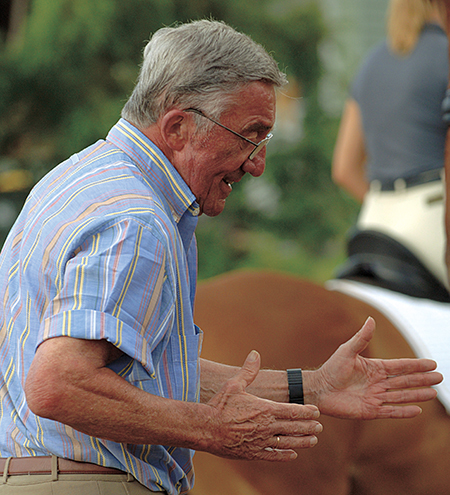
German dressage trainer and riding master Siegfried “Bimbo” Peilicke died in 2012 just months before his 80th birthday. For more than 20 years Bimbo was the German team trainer for junior and young riders and collected over 80 medals at championships of which 47 were gold.
Siegfried Peilicke was born in East Germany in 1932. He discovered his passion for horses working in the agricultural sector. First he competed at regional level and then followed an equestrian training at the Westfalian Riding School in Munster where he learnt frm the great Paul Stecken.
After working in a dressage barn in the United States, he moved to Stable Linsenhoff in Kronberg in 1959. There he rode a chubby Lippizaner stallion named “Bimbo”, which became the trainer’s nickname for life.
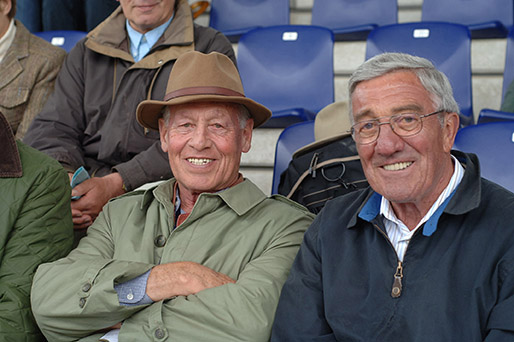
Two of the greats – Harry Boldt and Bimbo Peilicke
In 1976 Willi Schultheis recommended Peilicke to the German Olympic Equestrian Committee (DOKR) and Bimbo was hired as team trainer for the junior and young riders. He was extremely successful as team coach and supervised riders such as Nadine Capellmann, Sven Rothenberger, Ulla Salzgeber, Monica Theodorescu, and Nicole Uphoff.
Bimbo received the Riding Master title in 2002.
Story continues below the advertisement
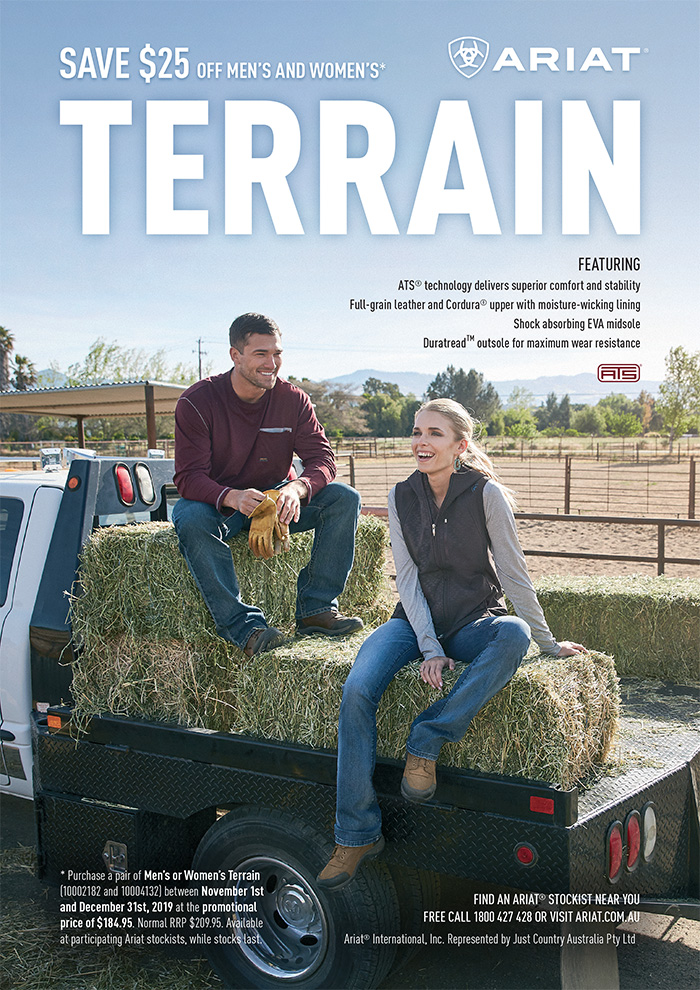
Bimbo was also one of the first to help Australian riders. The late Gert Donvig studied with him in Germany and invited him to Australia in the mid-80s to conduct a clinic at Statene Park. One of the riders most influenced by Bimbo was Glennis Barrey, who was just out of her teens when she moved to his stable in Warendorf. The bond lasted, and Bimbo was a regular visitor, conducting a series of clinics for Glennis. Please enjoy this encounter with one of the greats from our archives…
One of the rare treats of being at the GlennBarrey clinic was the opportunity to watch Bimbo and Glennis working together on her up-and-coming star, Classico II.
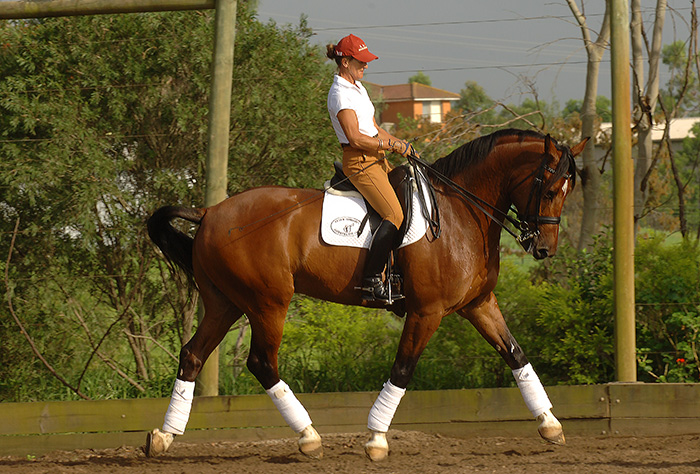
Now I confess while I have been filled with admiration for Glennis’ seemingly unstoppable rise through the ranks, winning major championships at every level, the horse has never been one of my personal favourites when it comes to type – too long, too big, and a bit strung out.
Wow, was I wrong! ‘Boy’ as he is known around the stables, looks an absolutely different horse, so much more balanced, so electric – and look at how he is going! He is one of the very few horses in Australia at the moment who can be elevated in the trot without getting passagey. He really does look like a future Grand Prix superstar.
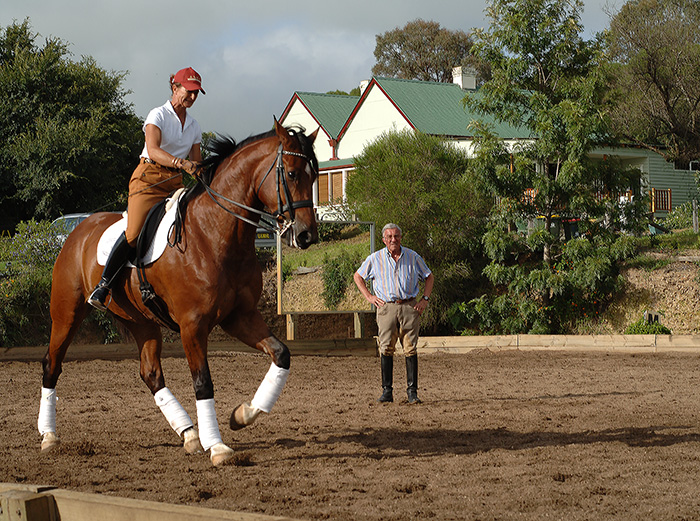
Bimbo had Glennis riding some interesting exercises, like serpentines along the long side with flying changes at every change of direction… or the travers left in piaffe, then walk pirouettes into piaffe.
According to Bimbo, the canter changes along the shallow serpentine were “to bring the horse more on the aids, it makes the horse more confident. When you ride a straight line and you give an aid for a flying change then you make more pressure, and the horse is a creature of flight – when he gets pressure, he runs away. When you put him on the turns you don’t have to use as much pressure to get a result so he is less inclined to run away, especially as the horse collects himself in the turns.”
Story continues below the advertisement
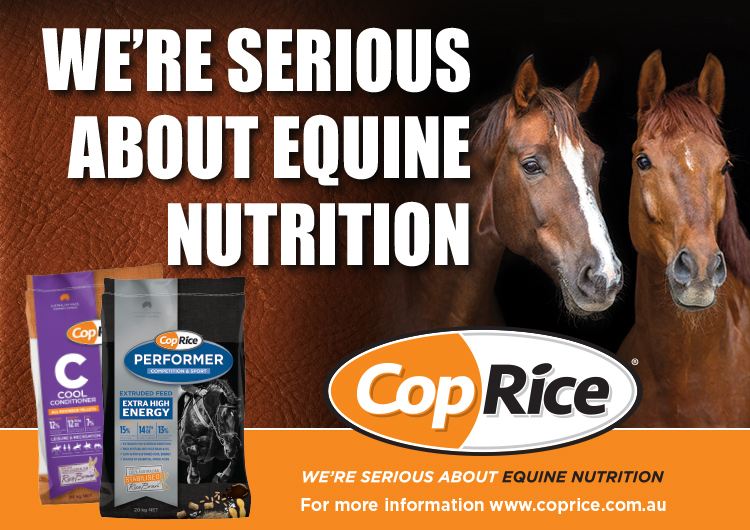
And why the travers position in the piaffe?
“Because he comes wide with the hind legs. He is more energetic in front and doesn’t quite know what to do behind. In the straight line you put more pressure on, it’s the flight response – the same principle as the flying changes, he wants to run away – so he has learnt to compensate by coming a bit wide. We want to use the travers position to stop him running away, and to get his hind legs closer together. Tomorrow, we try the other way, and put the quarters out, but still keep the bend of the travers. Bend him through the rib cage and you bring the hindquarters to the inside, so you keep pushing the outside hindleg to the inside hindleg, so he doesn’t swing from side to side.”
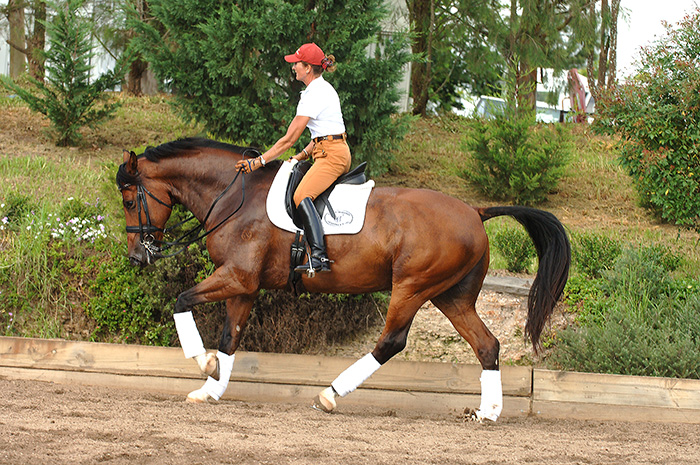
And always the work was broken up with walk…
“In the old days the master trainers were quite strict. You ride walk, then trot, then canter, and always with a proper walk in between, and then the work was done. Ride a few movements, walk, pick up the rein again, ride a few movements, and back on the buckle again. Every time you pick up the rein, you put on pressure, and as the movements become harder, more pressure, in between it is better to walk the pressure away.”
I confessed to Glennis that I had never seen her horse work in a frame like that…
“The hardest thing I’ve found is dealing with how much the horse has progressed. I still remember riding him as a four-year-old, and thinking he was quiet and nice, and then suddenly I have this huge horse that weighs over 700 kilos and I don’t even recognize how he looks now – I have someone video the horse every day with Bimbo, and when I go up to the house to look, it looks like someone else’s horse! I have to sit back and pinch myself. I did the Advanced and the Prix St Georges at the CDI and he was such a baby, still 7, and I felt a bit out of my league because he was so green – but now I look at him, and it is only seven months later, and he feels like a completely different horse. He just turned eight before Christmas, and he is on such a steep up-hill-climb that I find it a little bit tricky to actually keep up with him, because his progression is so fast.”
“It is so good to have Bimbo here. When the horse is balanced and light in your hand, the horse can do anything you want. He is always reminding you, once something goes a little bit wrong, change your line and find another exercise to get the result. Don’t keep pressuring and pressuring, to the point that the horse wants to run away.”
Story continues below the advertisement
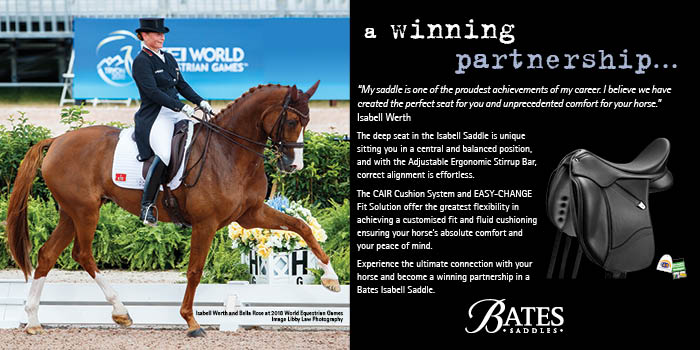
A final word:
“Whenever you give with the hand, you have to drive so that they come out to a contact. Not so you give the rein and it is loose – then they run. You have to ask them to step more forward with the hind legs so that you get the connection to the hand in the frame you wish for, not that you let the reins go and the hind legs are still going hodge podge behind. The contact is decided by the activity behind. You always have to have a connection between your hand and the horse’s mouth, and you only get that contact if you push the horse from your seat and leg into your hand. That relies on your feel – how much to give, how much to push.”
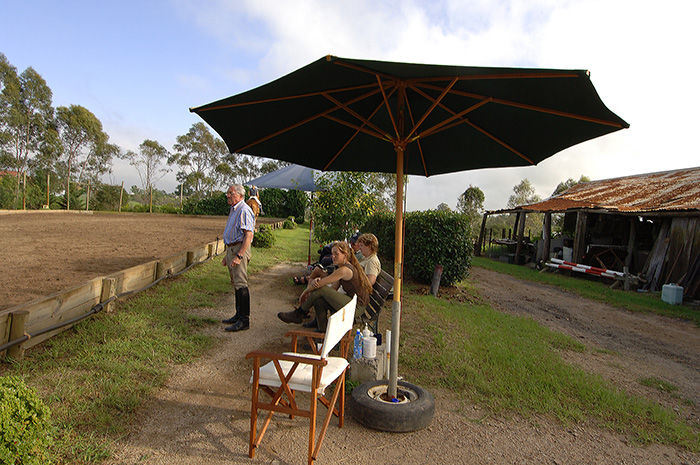
“We ride them somewhat lower but it doesn’t have anything to do with rollkur. It is only long and low where the horse stretches, it is not a contained position. You always have to give the horse a chance to relax and stretch, you can’t put them instantly into a frame – if you try it on yourself, you will feel that your back is hollow – you just put the horse to the point where you feel the back can come up, then when you bring them more up towards your competition frame, then the horse will carry its neck and it will be loose to the left and the right.”
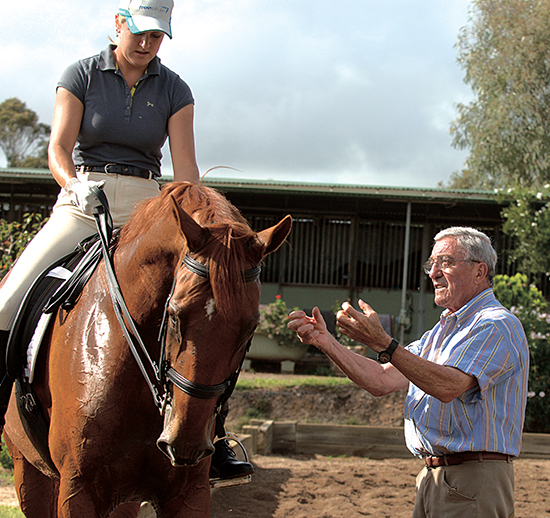
Want to breed your own dressage horse? You’ll be spoilt for choice with International Horse Breeders…
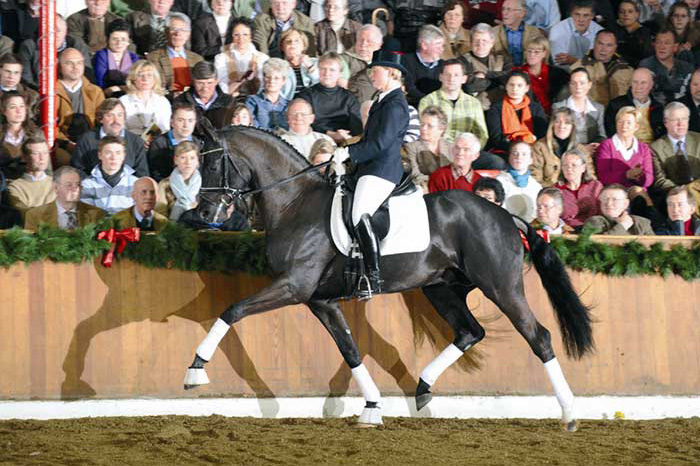
How about Sarkozy? A great cross, Sandro Hit over Weltmeyer, check him out…


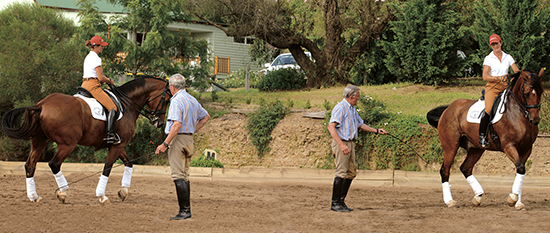
As someone who recently fell in love with and purchased a very similarly sized/shaped Swedish mare, this article gives me hope that she too can find her balance and become a swan. Brilliant article, thanks for sharing Bimbo’s timeless wisdom (and the origin of his nickname!).
Are the Dutch Gelderlander horses still being bred? Mine was a dream to ride and was a great companion.